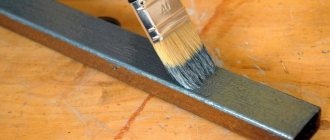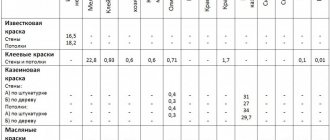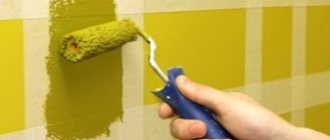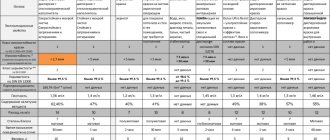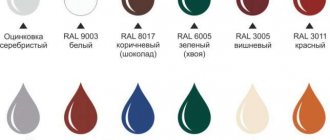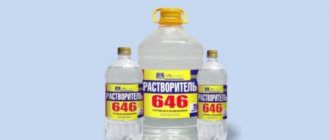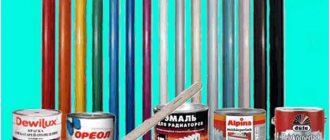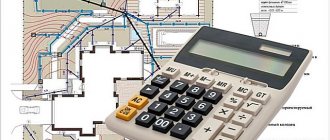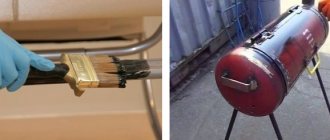Calculation of consumption of Knauf Primers / Knauf Mittelgrund (10 kg)
Fast and inexpensive delivery, as well as unloading and lifting to the apartment on any floor.
Expert advice, assistance in selecting materials and calculating the required quantity.
Return within one month or extended return period until the end of the repair * for only 5% of the cost of materials.
All materials are stored in dry warehouses, have certificates and quality passports.
By clicking on the "Submit" button, you agree to the Privacy Policy
By clicking on the "Submit" button, you agree to the Privacy Policy
Cost of unloading and lifting
If there is a working freight elevator, the cost of unloading 1 ton of cargo, taking into account the lift to the apartment, is 1,200? regardless of floor.
In the absence of a freight elevator, the cost of lifting 1 ton of cargo to one floor is 1,200?.
The cost of simple unloading of vehicles without lifting to the floor is 1,200 rubles per ton.
The minimum cost for a loader is 300 rubles.
© M-Delivery, 2021
st. Mariupolskaya, 6, office 28. Moscow, 109382
We accept:
Source
Cylindrical pipes
To calculate their area, a fairly simple technology is used. Calculation formula:
S = 2 * 3.14159 * R * L
, where R is the radius of the externally directed pipe, measured in mm;
L is the immediate length of the object being painted.
Well, the number 3.14159 - this number “pi” has been known since school.
Thanks to this approach, it is possible to obtain significant benefits. After all, you won’t need to purchase extra cans of paint. In addition, cylindrical pipes have their own variety, which is used for sewers. The same formula is used as for conventional cylindrical pipes. There is an important nuance: cylindrical sewer pipes are large.
To simplify measurements, it is important to understand the factor: the base of all measurements is considered to be a height of 90 cm. In the vast majority of cases, rings of this exact size are used
Well, the external diameter can vary from 70 to 200 cm. Let's give an example. If the diameter is 70 cm, then the area will be 1.99 square meters.
Paint calculator
Painting pipes is a mandatory stage of their installation, as it significantly extends their service life and also gives them a beautiful appearance. To perform these works, you should purchase consumables: primer and paint. How do you determine how much to buy so that it’s enough, but there’s no extra left over? After all, today high-quality primer and paint are quite expensive materials and it will be expensive to overpay for leftovers. It’s one thing when you need to paint a pipe in a house, but quite another thing when there are large volumes - for example, at a water pump or gas distribution station.
| Pipe diameter, mm | Paint application method | Pipe length, m | |
| Required amount of paint for two layers | ||||
| kg | Banks | 0.9 | ||
| Required amount of primer for one coat | ||||
| kg | Banks | 0.9 | ||
| Required amount of primer for two coats | ||||
| kg | Soil GF-021 | Banks | 0.9 | |
To help, Azmen engineers have developed a calculator for calculating the amount of paint for painting pipes, which you can use online directly on our website - just enter the data and the program will quickly and accurately calculate the required amount of paint depending on the diameter of the pipe and its length.
Dimensions of square profile pipe and weight per linear meter
A square pipe is often used for racks, the supporting frame is assembled from it, and the lintels are made from a rectangular one. It is easier to attach materials (any) to such a frame. And, all other things being equal, the bending strength of a square profile pipe is higher. It is comparable to the performance of an I-beam. But the resistance to torsional loads of a round pipe is much higher. So this must be taken into account.
But to avoid problems, it is necessary to maintain the recommended dimensions of the profile pipes. As already mentioned, all sizes (range) are specified in GOST standards. The possible wall thickness is also indicated there. Small pipes - from 10 to 35 mm in diameter - have a thickness from 0.8 mm to 5 mm. But pipes with sides of 10 mm and 15 mm have walls no thicker than 1.5 mm. Then there is a gradual increase in the minimum size. For example, 40*40 mm has the thinnest wall of 1.4 mm, while 45*45 mm has no wall thinner than 3.0 mm. The same trend continues. The larger the size of the profile pipe, the thicker the walls.
| Size in mm | Weight of one meter, kg | Size in mm | Weight of one meter, kg | Section of the profile pipe in mm | Weight of one meter, kg | Section of the profile pipe in mm | Weight of one meter, kg | Section of the profile pipe in mm | Weight of one meter, kg | Section of the profile pipe in mm | Weight of one meter, kg |
| Square pipe 10x10x0.8 | 0,222 | Square pipe 30x30x0.8 | 0,725 | Profile square pipe 40x40x3.5 | 3,85 | Profile square pipe 60x60x2 | 3,59 | Profile square pipe 90x90x3 | 8,07 | Profile square pipe 150x150x9 | 38,75 |
| 10x10x0.9 | 0,246 | 30x30x0.9 | 0,811 | 40x40x4 | 4,30 | 60x60x2.5 | 4,43 | 90x90x4 | 10,59 | 150x150x10 | 42,61 |
| 10x10x1 | 0,269 | 30x30x,1 | 0,897 | 40x40x5 | 5,16 | 60x60x3 | 5,25 | 90x90x5 | 13,00 | Profile square pipe 180x180x8 | 42,34 |
| 10x10x1.2 | 0,312 | 30x30x1.2 | 1,07 | 40x40x6 | 5,92 | 60x60x3.5 | 6,04 | 90x90x6 | 15,34 | 180x180x9 | 47,23 |
| 10x10x1.4 | 0,352 | 30x30x1.3 | 1,15 | Profile square pipe 42x42x3 | 3,55 | 60x60x4 | 6,82 | 90x90x7 | 17,58 | 180x180x10 | 5,03 |
| Square pipe 15x15x0.8 | 0,348 | 30x30x1.4 | 1,23 | 42x42x3.5 | 4,07 | 60x60x5 | 8,30 | 90x90x8 | 19,73 | 180x180x12 | 61,36 |
| 15x15x0.9 | 0,388 | 30x30x1.5 | 1,31 | 42x42x4 | 4,56 | 60x60x6 | 9,69 | Profile square pipe 100x100x3 | 9,02 | 180x180x14 | 70,33 |
| 15x15x1 | 0,426 | 30x30x2 | 1,70 | 42x42x5 | 5,47 | 60x60x7 | 11,00 | 100x100x4 | 11,84 | Square pipes of special sizes | |
| 15x15x1.2 | 0,501 | 30x30x2.5 | 2,07 | 42x42x6 | 6,3 | 60x60x8 | 12,20 | 100x100x5 | 14,58 | 32x32x4 | 3,30 |
| 15x15x1.4 | 0,571 | 30x30x3 | 2,42 | Profile square pipe 45x45x2 | 2,65 | Profile square pipe 70x70x3 | 6,19 | 100x100x6 | 17,22 | 36x36x4 | 3,80 |
| 15x15x1.5 | 0,605 | 30x30x3.5 | 2,75 | 45x45x3 | 3,83 | 70x70x3.5 | 7,14 | 100x100x7 | 19,78 | 40x40x2 | 2,33 |
| Square pipe 20x20x0.8 | 0,474 | 30x30x4 | 3,04 | 45x45x3.5 | 4,40 | 70x70x4 | 8,07 | 100x100x8 | 22,25 | 55x55x3 | 4,78 |
| 20x20x0.9 | 0,529 | Square pipe 35x35x0.8 | 0,85 | 45x45x4 | 4,93 | 70x70x4 | 9,89 | 100x100x9 | 24,62 | 65x65x6 | 10,63 |
| 20x20x1 | 0,583 | 35x35x0.9 | 0,953 | 45x45x5 | 5,94 | 70x70x6 | 11,57 | Profile square pipe 110x110x6 | 19,11 | ||
| 20x20x1.2 | 0,689 | 35x35x1.4 | 1,45 | 45x45x6 | 6,86 | 70x70x7 | 13,19 | 110x110x7 | 21,98 | ||
| 20x20x1.4 | 0,791 | 35x35x1.5 | 1,55 | 45x45x7 | 7,69 | 70x70x8 | 14,71 | 110x110x8 | 24,76 | ||
| 20x20x1.5 | 0,841 | 35x35x2 | 2,02 | 45x45x8 | 8,43 | Profile square pipe 80x80x3 | 7,13 | 110x110x9 | 27,45 | ||
| 20x20x2 | 1,075 | 35x35x2.5 | 2,46 | Profile square pipe 50x50x2 | 2,96 | 80x80x3.5 | 8,24 | Profile square pipe 120x120x6 | 20,99 | ||
| Square pipe 25x25x0.8 | 0,599 | 35x35x3 | 2,89 | 50x50x2.5 | 3,64 | 80x80x4 | 9,33 | 120x120x7 | 24,16 | ||
| 25x25x0.9 | 0,670 | 35x35x3.5 | 3,30 | 50x50x3 | 4,31 | 80x80x5 | 11,44 | 120x120x8 | 27,27 | ||
| 25x25x1 | 0,740 | 35x35x4 | 3,67 | 50x50x3.5 | 4,94 | 80x80x6 | 13,46 | 120x120x9 | 30,28 | ||
| 25x25x1.2 | 0878 | 35x35x5 | 4,37 | 50x50x4 | 5,56 | 80x80x7 | 15,38 | Profile square pipe 140x140x6 | 24,76 | ||
| 25x25x1.4 | 1,01 | Profile square pipe 40x40x1.4 | 1,67 | 50x50x4.5 | 6,16 | 80x80x8 | 17,22 | 140x140x7 | 28,57 | ||
| 25x25x1.5 | 1,07 | 40x40x1.5 | 1,78 | 50x50x5 | 6,73 | 80x80x9 | 18,97 | 140x140x8 | 32,29 | ||
| 25x25x2 | 1,39 | 40x40x2 | 2,33 | 50x50x6 | 7,80 | 80x80x10 | 20,63 | 140x140x9 | 35,93 | ||
| 25x25x2.5 | 1,68 | 40x40x2.5 | 2,85 | 50x50x7 | 8,79 | 80x80x11 | 22,20 | Profile square pipe 150x150x7 | 30,77 | ||
| 25x25x3 | 1,95 | 40x40x3 | 3,36 | 50x50x8 | 9,69 | 140x140x8 | 34,81 |
The tables also indicate the weight of a linear meter of profile pipe of each size. It is needed not only to be able to calculate the load on transport. Using this data you can control the wall thickness. You can weigh a piece of pipe, calculate the weight of a linear meter, and then compare it with the standard. If the data is close, everything is fine. If the actual weight is much less, the wall thickness is less than stated. True, the table shows the weight at a steel density of 7.85 g/cm². If the density of the pipe steel is less, this will need to be taken into account.
Primer consumption rates
Primer consumption for treating a wall, ceiling or any other surface is one of the points that is regulated by GOSTs. For example GOST 25129-82
for primer GF-21. Density, color, viscosity, period for complete drying, etc. are also regulated. The same GOST regulates both the purpose of the soil and the area of its use according to its composition.
The primer can be used for treating wood, concrete, brick, as well as for work on plaster, metal and drywall. There are also universal mixtures that can be used to cover absolutely any surface.
As a rule, for all building materials the consumption rate is indicated on the packaging. But this is only a preliminary calculation.
If you watch the video tutorials on how surface priming is done, you will see that the primer is applied in 2 and sometimes 3 layers. The first layer will be almost completely absorbed by the material, and all subsequent layers will help create a base for finishing.
Also, the consumption of soil depends on the experience of the master and on the technique with which he applies the composition to the surface:
- with a brush.
- roller
- spray bottle, etc.
On average, the material consumption calculator looks like this:
- Consumption of Betonokontakt soil per square is about 400 ml;
- the soil, which is used for preparatory work on the base for decoration, is consumed in the amount of 200 ml/m2;
- acrylic mass is consumed at the rate of 100 ml per square wall;
- consumption of alkyd substance varies around 120-200 ml/m2;
- the consumption of GF-021 soil for metal will be about 120 ml per square;
- silicate façade composition is consumed in an amount of 130-150 ml/m2;
- The smallest amount of primer is required for galvanizing - up to 80 ml/m2.
Cylindrical pipes
To calculate their area, a fairly simple technology is used. Calculation formula:
S = 2 * 3.14159 * R * L
, where R is the radius of the externally directed pipe, measured in mm;
L is the immediate length of the object being painted.
Well, the number 3.14159 - this number “pi” has been known since school.
Thanks to this approach, it is possible to obtain significant benefits. After all, you won’t need to purchase extra cans of paint. In addition, cylindrical pipes have their own variety, which is used for sewers. The same formula is used as for conventional cylindrical pipes. There is an important nuance: cylindrical sewer pipes are large.
To simplify measurements, it is important to understand the factor: the base of all measurements is considered to be a height of 90 cm. In the vast majority of cases, rings of this exact size are used
Well, the external diameter can vary from 70 to 200 cm. Let's give an example. If the diameter is 70 cm, then the area will be 1.99 square meters.
Information
After completing the installation of pipe communications, above-ground or underground pipelines, the need arises to paint the pipes. This is done to avoid corrosion and destruction of steel pipelines. The online calculator will help you calculate the area of the pipe, as well as the paint consumption for painting the pipe surface. The program will quickly and without errors determine the area to be painted on the pipe; you just need to enter the available dimensions into the calculator menu bar.
Calculator functions for calculating pipes
The pipe area calculator for painting is an online program consisting of the following blocks:
- two lines for entering pipe sizes;
- additional function “Count paint consumption”;
- two lines of output of finished calculation results;
- reference information with a pipe sketch, formula and explanation of symbols.
The pipe painting calculator allows you to calculate:
- pipe surface area;
- required amount of paint.
In addition, the finished result can be saved as a PDF file or printed with one click.
How the calculator works
To get a ready-made calculation of the pipe area and paint consumption, you need to enter the following data in the program menu lines:
- indicate the outer diameter, in mm;
- indicate the length, in meters;
Cylindrical pipes
To calculate their area, a fairly simple technology is used. Calculation formula:
S = 2 * 3.14159 * R * L
, where R is the radius of the externally directed pipe, measured in mm;
L is the immediate length of the object being painted.
Well, the number 3.14159 - this number “pi” has been known since school.
Thanks to this approach, it is possible to obtain significant benefits. After all, you won’t need to purchase extra cans of paint. In addition, cylindrical pipes have their own variety, which is used for sewers. The same formula is used as for conventional cylindrical pipes. There is an important nuance: cylindrical sewer pipes are large.
To simplify measurements, it is important to understand the factor: the base of all measurements is considered to be a height of 90 cm. In the vast majority of cases, rings of this exact size are used
Well, the external diameter can vary from 70 to 200 cm. Let's give an example. If the diameter is 70 cm, then the area will be 1.99 square meters.
